As a continuation of the second term towards designing self-sufficient building(s) that manipulate particles in the atmosphere, the project is envision to be a transportable citizen science laboratory that travel through aerial means and changes in its nature of temporarity as well as material phase accordingly.

The permafrost is melting and scientists found out that dark snow is causing the snow to absorb more heat.

The Dark Snow Project organization has 50 years of citizen science studies on ice sheet melt and sea level rise. The impact of microbes is being studied.
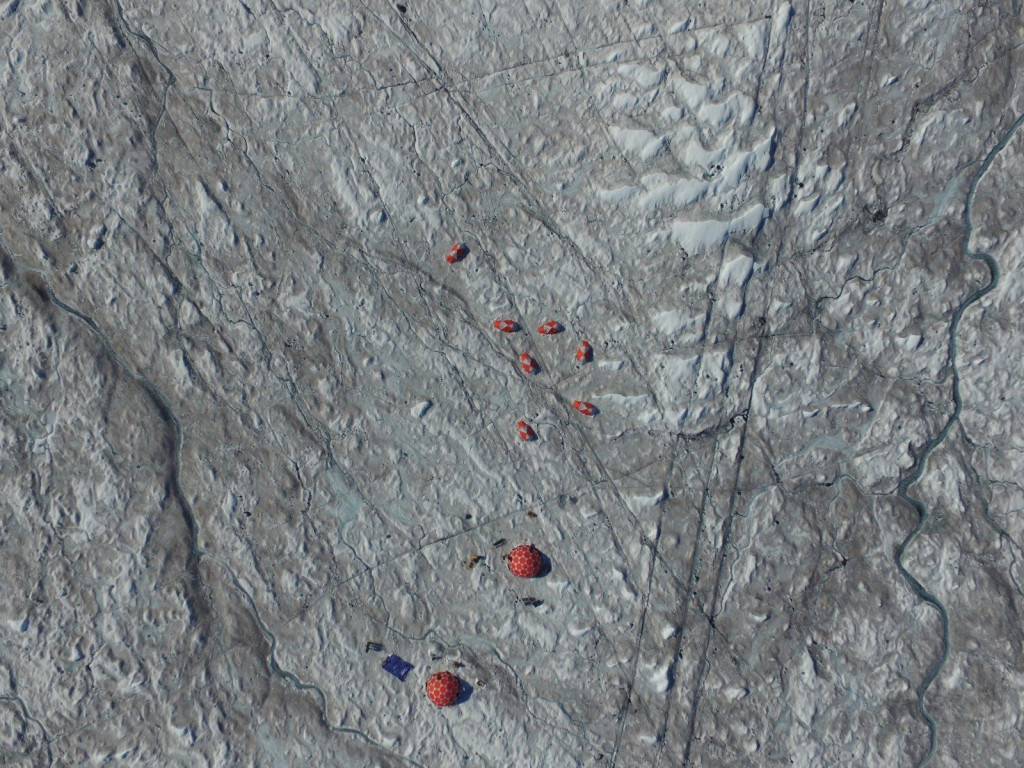
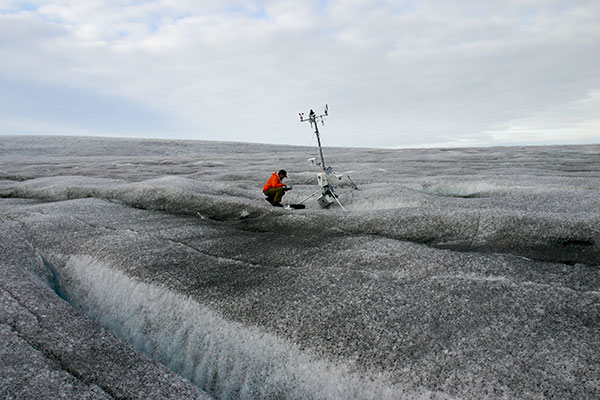
Microbes on ice sheet inhabit in Cryoconite Holes, which provided them the favourable condition for photosynthesis due to the following reason:
1. maintain high light intensities and blocked harmful uv
2. nutrient in melt water flow through hole walls
3. relative long term storage (years) of microbes
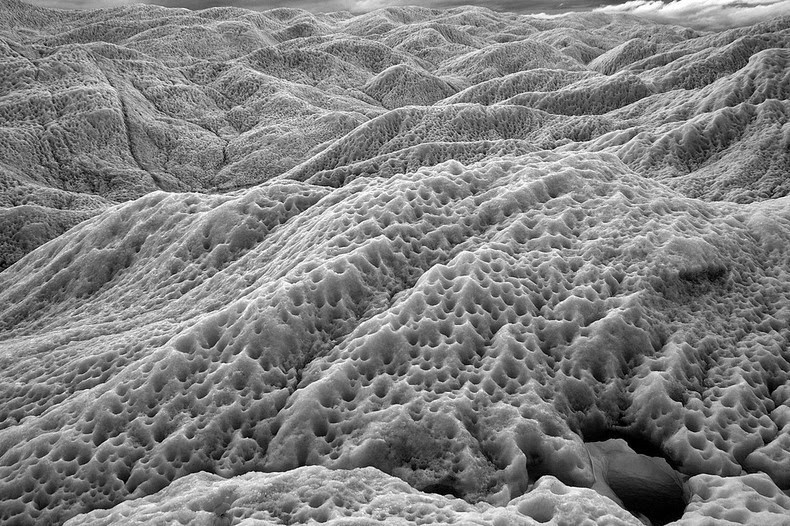
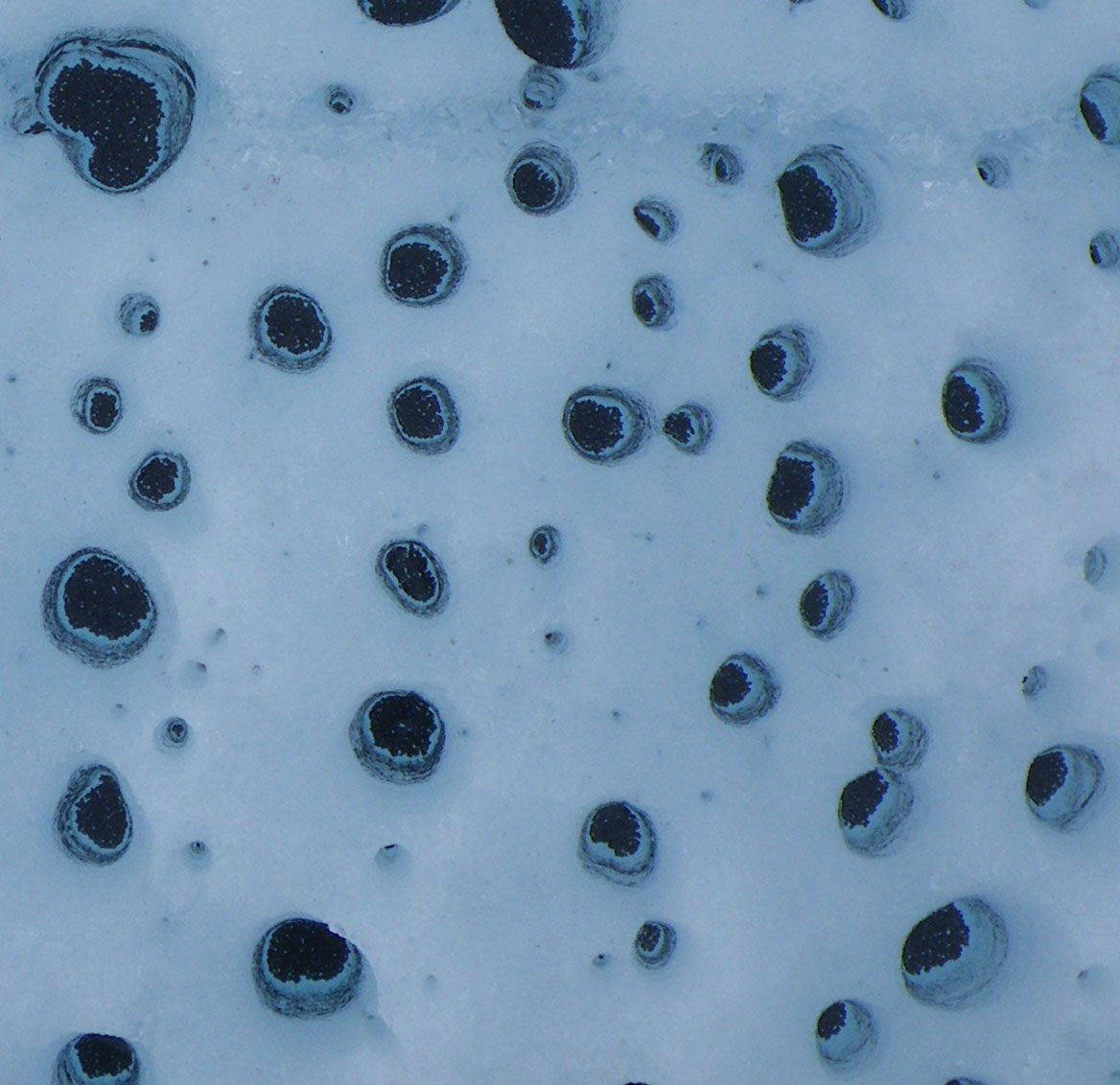
There are three types of ice algae which are contributing to surface darkening of snow
1. Cylindrocystic brebiggonii
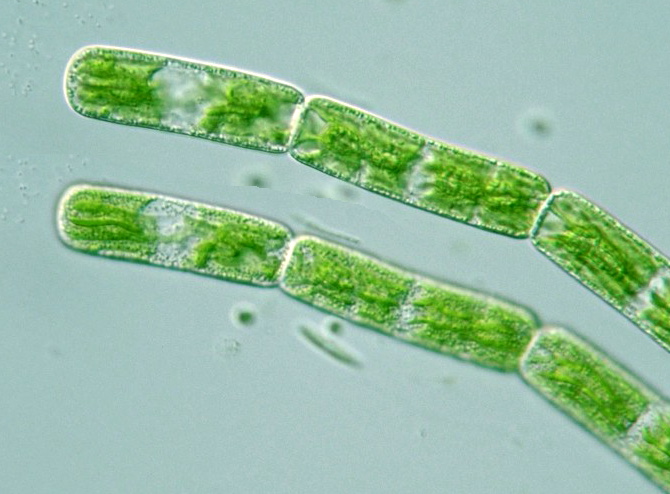
2. Mesotaenium berggrenii
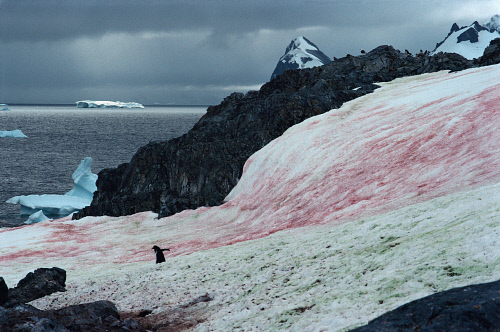
3. Ancylonema nordenskioldii
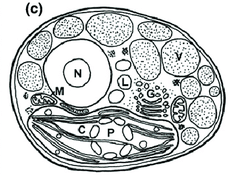
Ice algae grows on glacier surface worldwide. They belong to group of green algae (zygnemato phyceae or conjugating algae) that produce purple brown pigment, which is a kind of pigment found in black tea. There exist tens of thousands of algae cells in every mm of ice sample. The estimated biological area is greater than 400,000 sq.m. Albedo value of the ice surface changes due to darkening effect, contributing to ice melt.
In response to the aforementioned problem, scientists launched expedition to collect dark snow samples and start to research on their effect on warming the arctic permafrost. However, The scientific expedition on land by means of Caterpillar vehicle, which is the most conventional way of conducting expedition, is polluting the environment. Green scientific expedition was not realized until Ramón Larramendi had invented his Wind-powered Sled, which is a kite hauled sled system requiring no active input of energy.
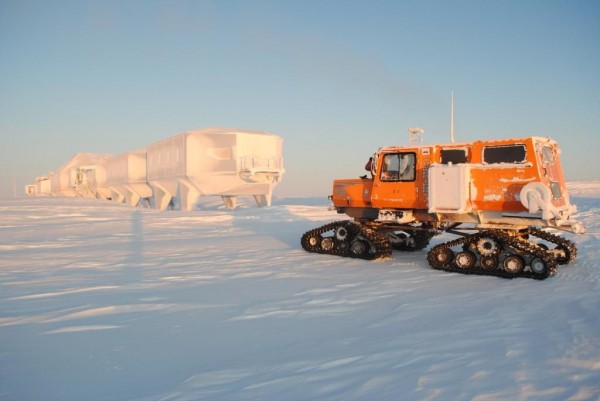
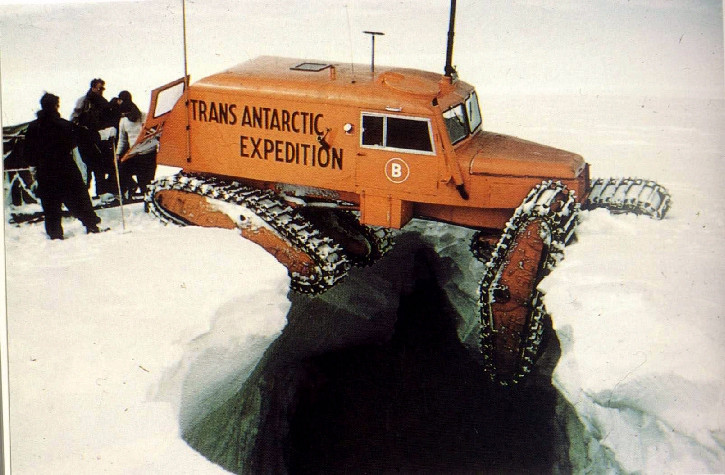
Windsled Traverse Project taken place in 2017 in Greenland is part of dark snow project to collect of black carbon samples to investigate spatial variability
and relationship to snow melt.
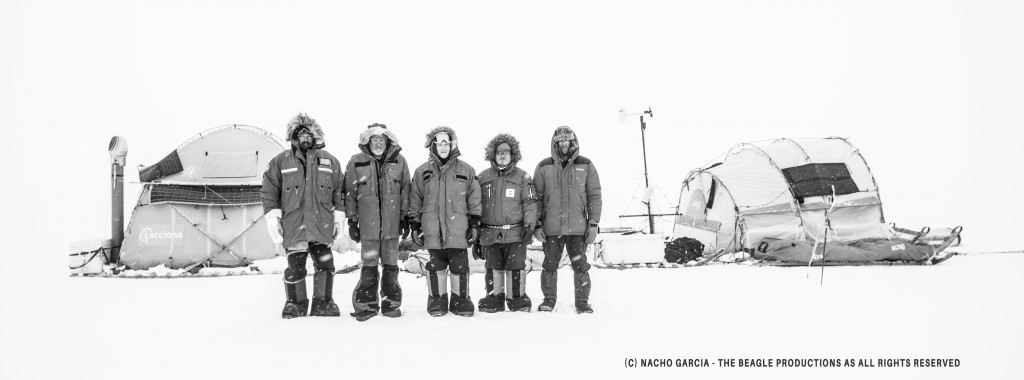
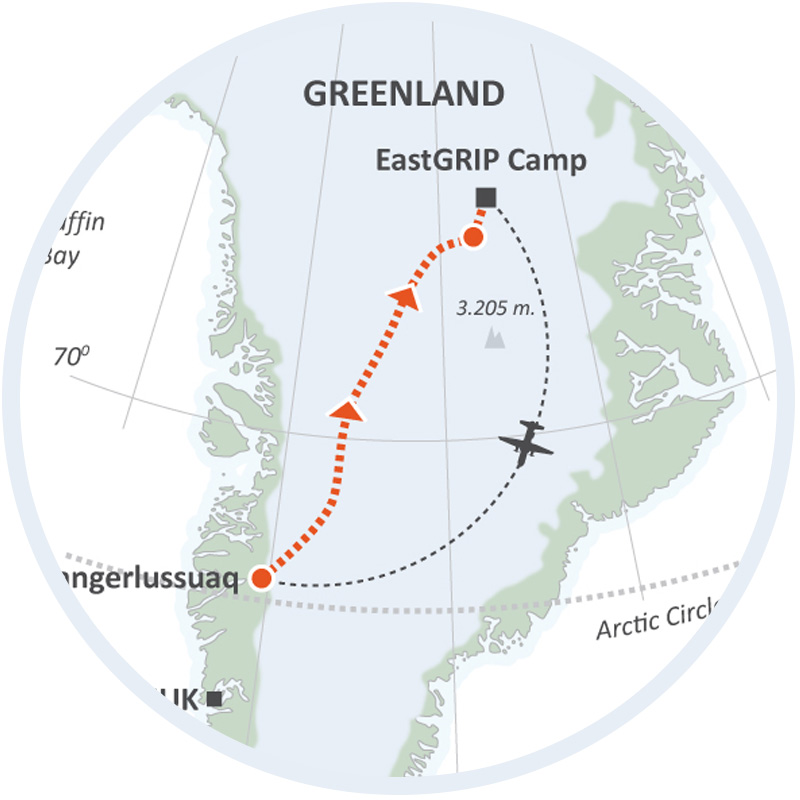
The latest development of ACCIONA Windpowered Sled by Ramón Larramendi, make used of kite of surface area up to 48sq.m, and a base that is flexibly adapting to the terrain, at the same time, having the capacity of supporting 1200kg, is composed of three modules, namely, the locomotive, loading and habitable module. The wind-powered sled is inspired by Inuit/Eskimos technologies
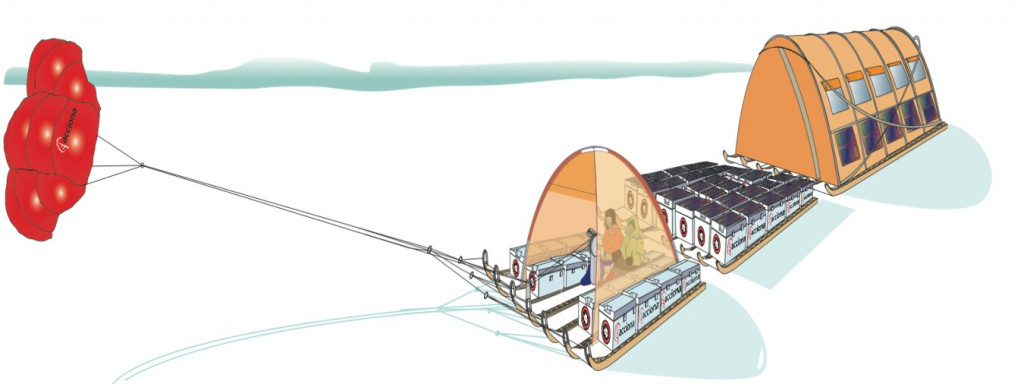
Studying the classic expeditions, learning from the native Eskimos is a crucial factor of success. Compare the two great expeditioners that crosses the Antarctic, one solely rely on modern technology, the other applies knowledge he learnt from the Eskimos.
In Robert F. Scott Expedition, the mistake that he made showing his reliance on modern technology itself include using horses that could not withstand the cold and mechanized vehicle freezes. Eventually, The team has to carry the sled themselves.
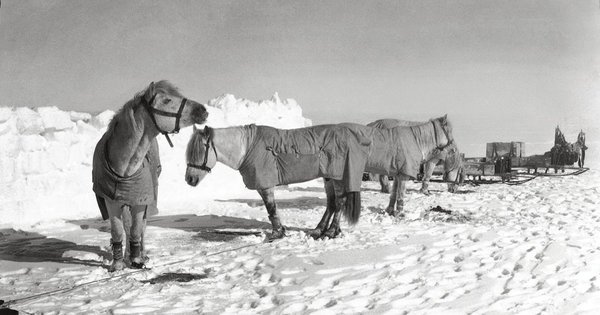
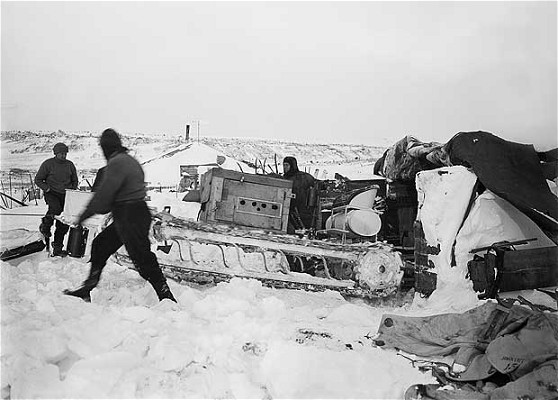
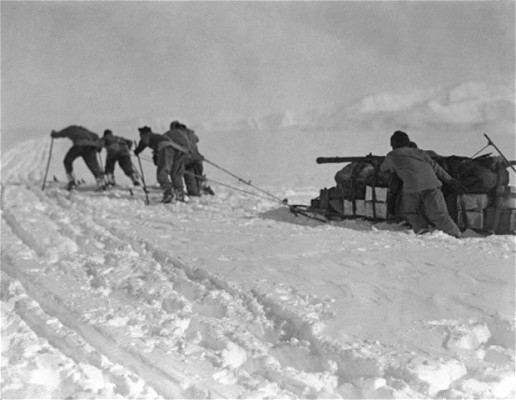
On the other hand, in Roald Amundsen Expedition, he spent months with Eskimos, learning from their feeding pattern, and how to direct a sled pulled by dogs.
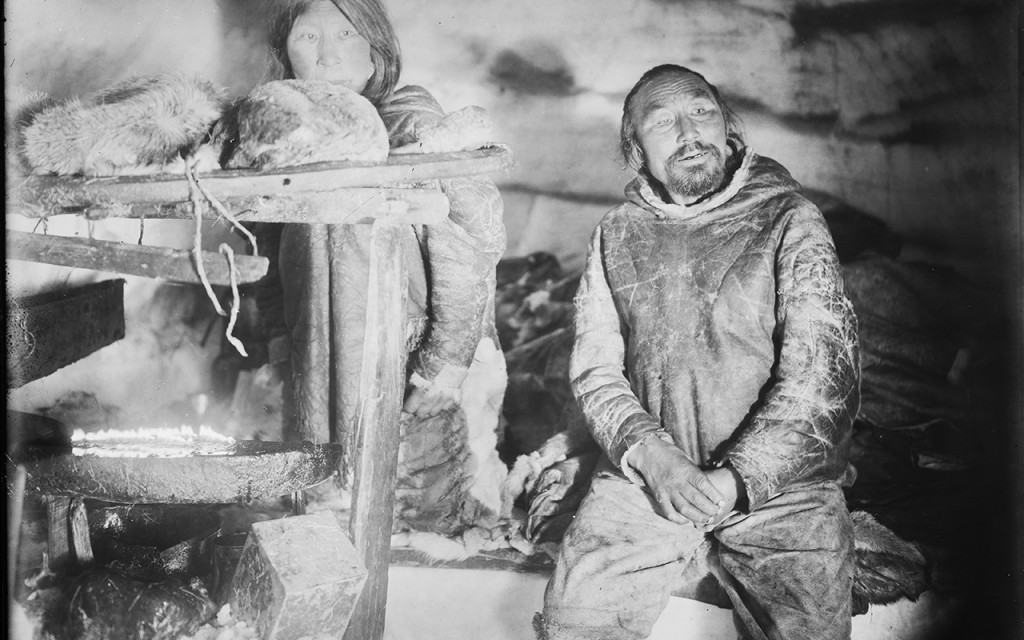

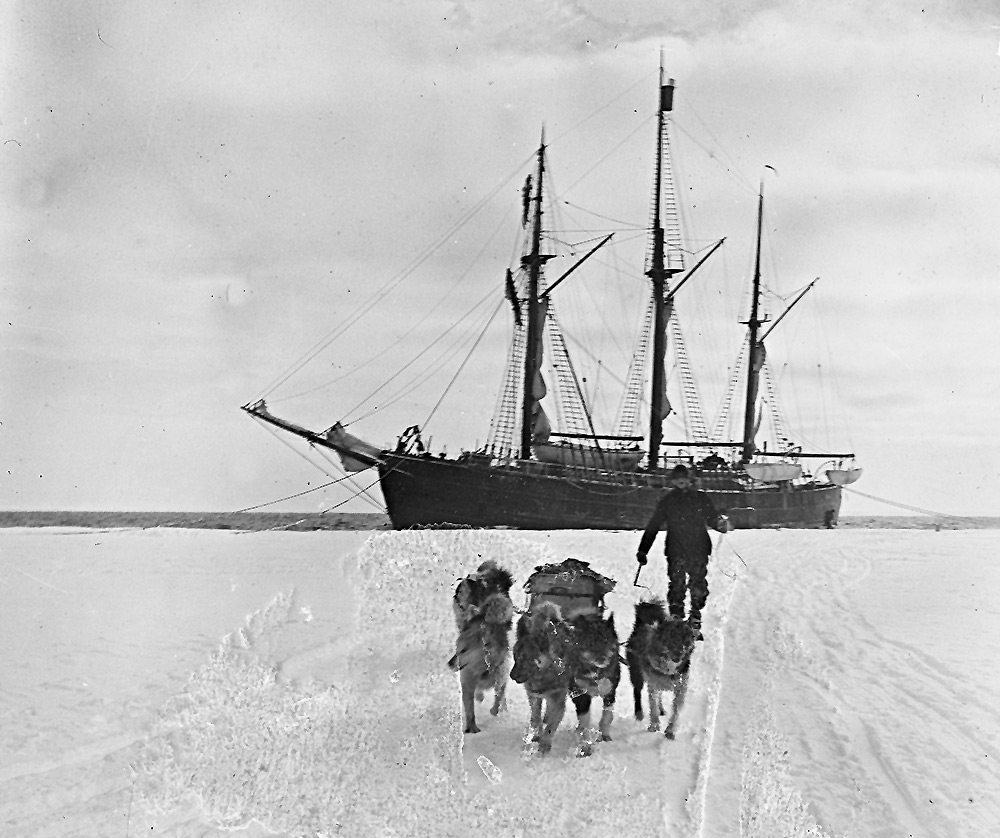
Eskimos were people that originally lived a nomadic lives. After the American colonization, Eskimos are being relocated near the coast for easy loading and unloading of the material to build infrastructure. As permafrost thaw, Inuit people are exposed to fierce tides due to the lost of natural barrier.
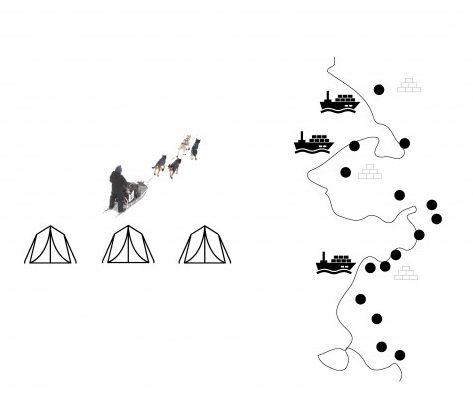
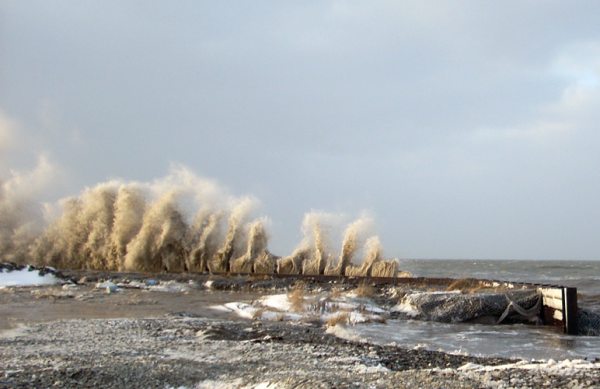
Extreme climates causes many parts of the coastal land to be inhabitable, communities are displaced, some to higher land, others have to search for new locations, limited to the presence of permafrost under the ground, which is thawing and unstable, the affected communities have great difficulties finding new places where they can relocate to
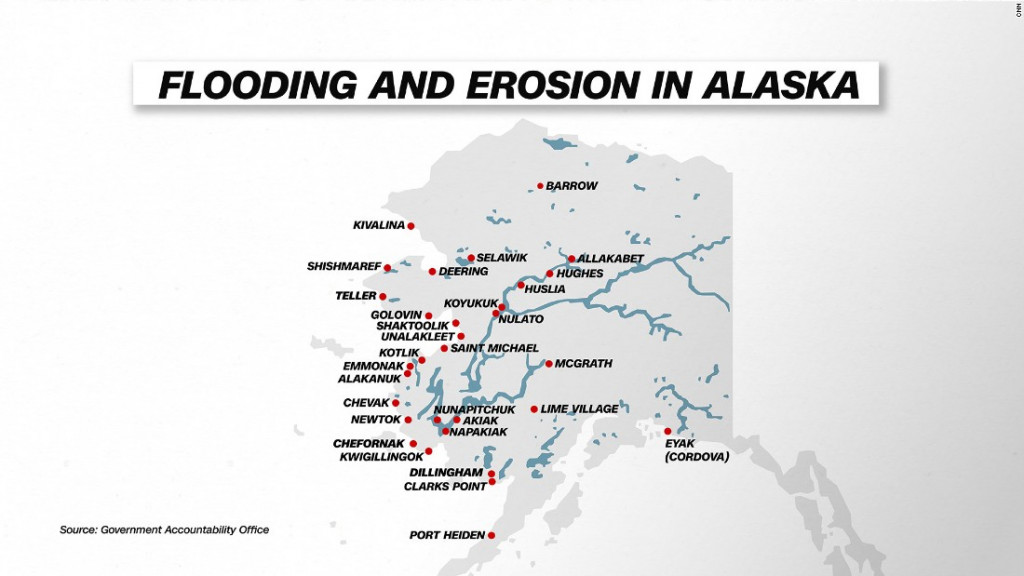
The building site of this project located in Koyukuk, the river mouth intersection between the Koyukuk river and the Yukon river.
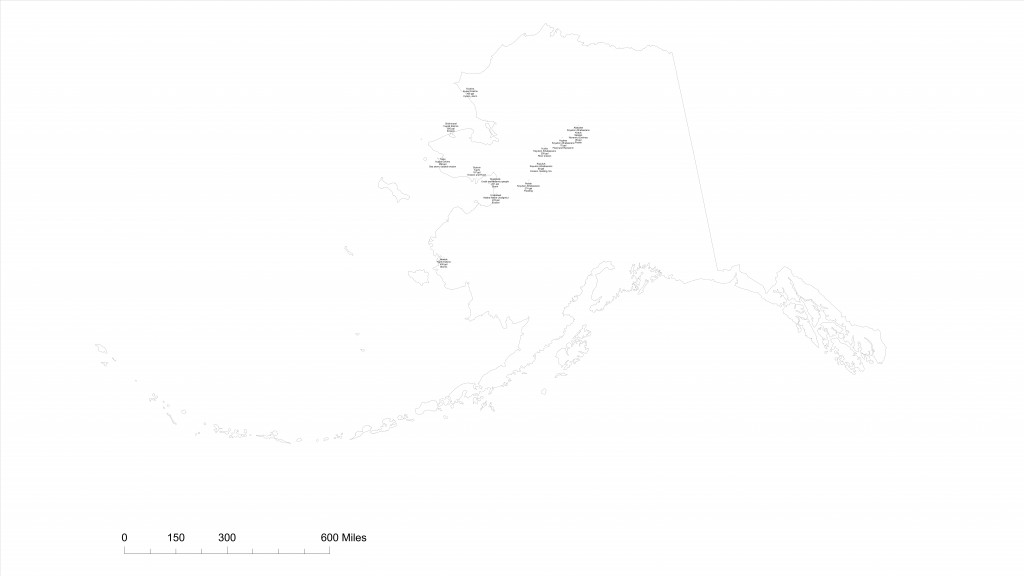
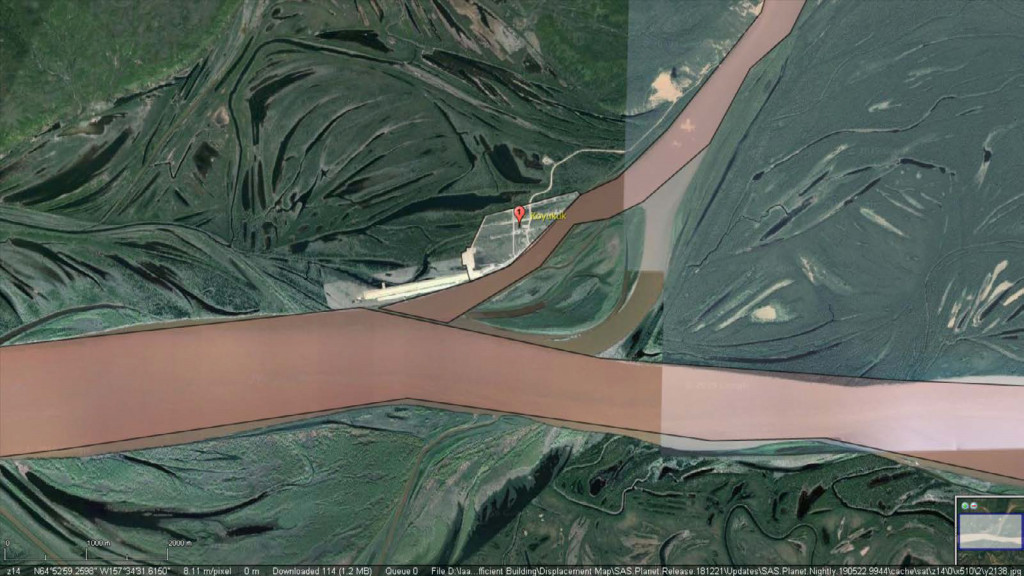
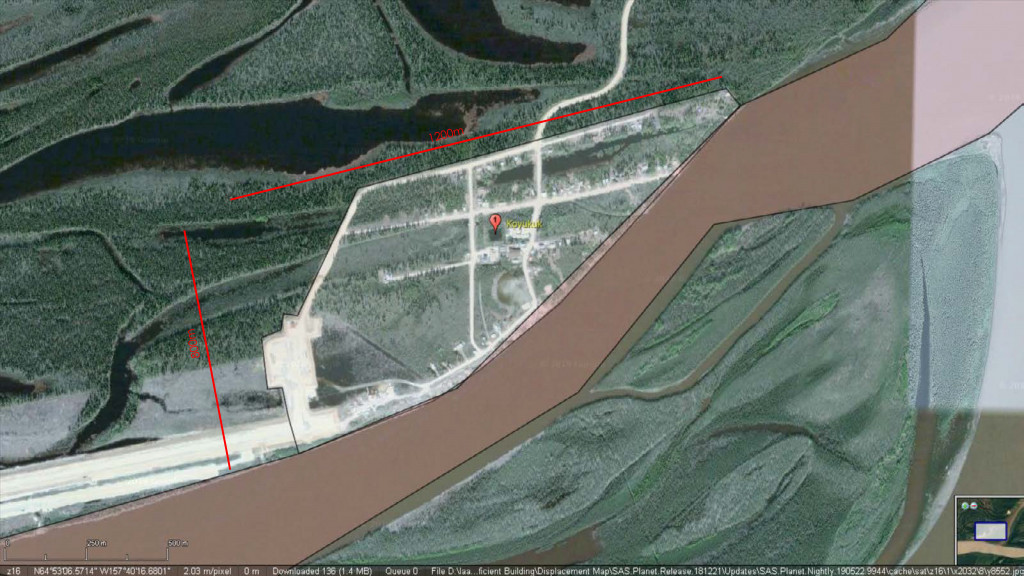
The project acts as a theoretical criticism to the two school of thoughts
- Returning to their own land and dwellings is a major goal for most crisis-affected people. (The Sphere Handbook: Humanitarian Charter and Minimum Standards in Humanitarian Response. (2018). 4th ed. [ebook] Geneva: Sphere Association, p.248. Available at:
http://www.spherestandards.org/handbook)
- These mitigation options can be more effective when the crisis-affected people were provided with the opportunity to relocate or rebuild in an area outside that is safer. (
https://www.fema.gov/media-library-data/1404149768322-b9011bb0832901c819894dd6e26e57f1/FEMA_P312_Chap_6.pdf)
Unlike places that lies on the seismic belt, the disaster risk of these places are dynamically changing depends on the melting and freezing of land.
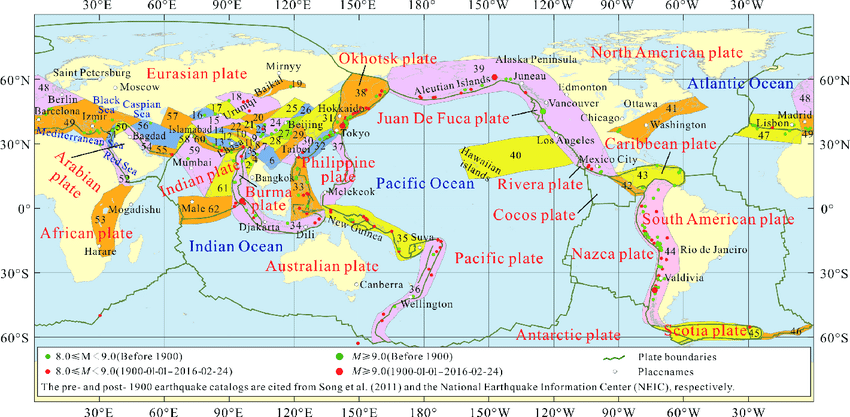


The displaced communities has large concern about climate change and how it impacts their livelihood and also express a strong desire of remaining in their original land
Consequently, my design temporarily relocate the affected communities to the atmosphere above their homeland. The living unit floating on the atmosphere has an extension use as laboratory dedicated to the research of dark snow. The two major aspects are
- How pigment of ice algae affects the albedo of snow surface
- The relationship of light intensity and the growth of ice algae
The units provide a transportation means for the affected communities who do expedition utilizing the old route of the nomad to collect snow samples for experimentation
The first concept sketch convey the idea of adopting a inflatable funicular geometry to separate the space between water particles and human space to provide spaces for the two to interact. The second sketch convey the idea of having a portion of locomotive space made by the flexible tensegrity system, which also create a porus content to divert air flow, the two system is linked by a ring truss which prevent the tensegrity base to experience too much local shear force when the inflatable portion deform.
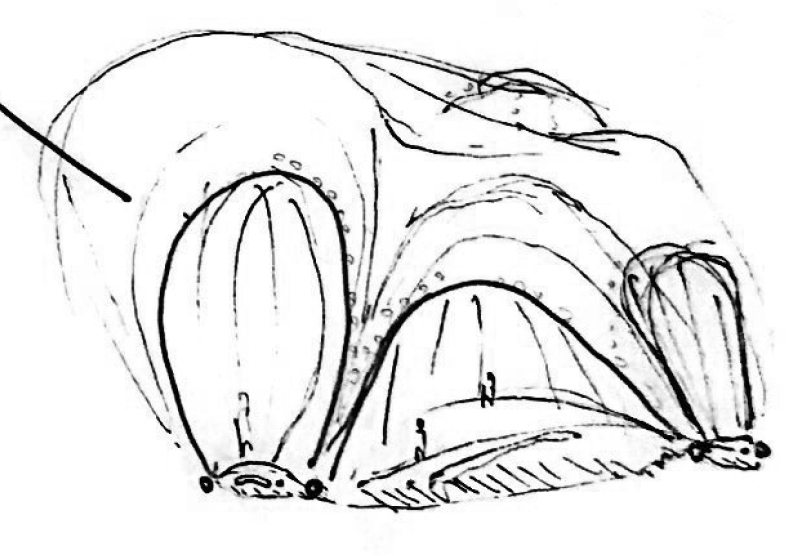
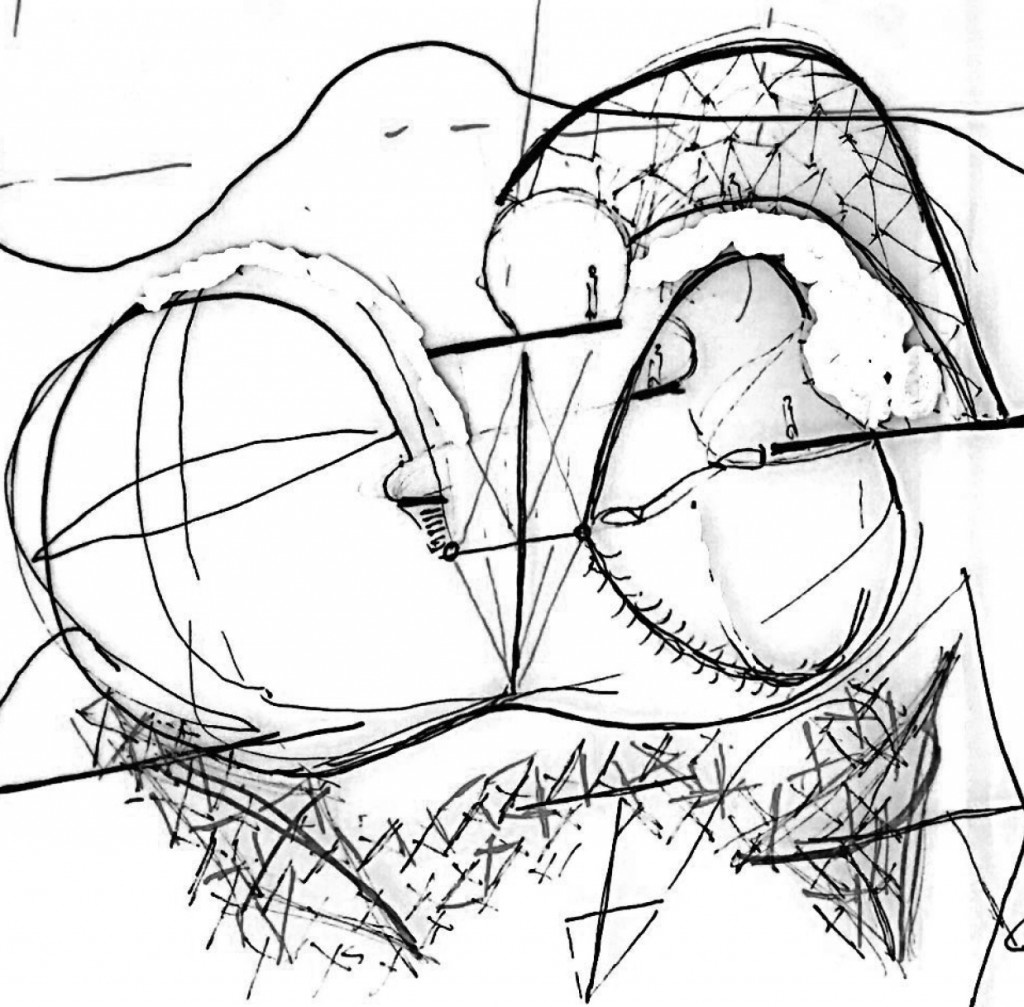
The phenomenon of fierce tides contribute to pressurizing water and releasing in gas form through nozzle, which insulate the architecture, separate indoor from outdoor space and was supplied to device for the experiment.
Upon various arrangement of the units, inspired by organization of traditional Inuit settlements, spaces where people are empowered through engaging in citizen science are formed.
Under the temporary organization of units, vapour are condensed and bigger and heavier droplets are formed based on surface tension. Depends of the organization of units, spaces defined by the water curtain and floating units is created for larger scale experiments on dark snow.
As the droplet-formed-pound become heavier, the building rains and the long distance freezes the rain to form new ice cubes that are planted on the ground. Hot wire was placed between each layer of ice cubes dropped, melting and refrozening the ice to seal the seam in between. Depending on the solar exposure of the ice pillar formed, the surface resolution will be different.
Eventually, a permanent form of living is re-established, a “Home for All” re-explore the new social models, The architecture could be interpreted as “Igloo 2.0”, which is grounded on Inuit technology and at the same time being capable of confronting the present challenges. “Home for All” is a platform for Eskimos / Inuit communities to talked about the future of their living environment and to developed collective strategies to combat climate change




FLOATING LAB is a project of IaaC, Institute for Advanced Architecture of Catalonia
developed at Master in Advanced Architecture in 2019 by:
Students: Timothy Ka Kui LAM
Faculty: Enric Ruiz Geli, Josep Perello, Mireia Luzarraga,and Alejandro Muino
Support: Mohamad Rachid Jalloul and Francois Nour